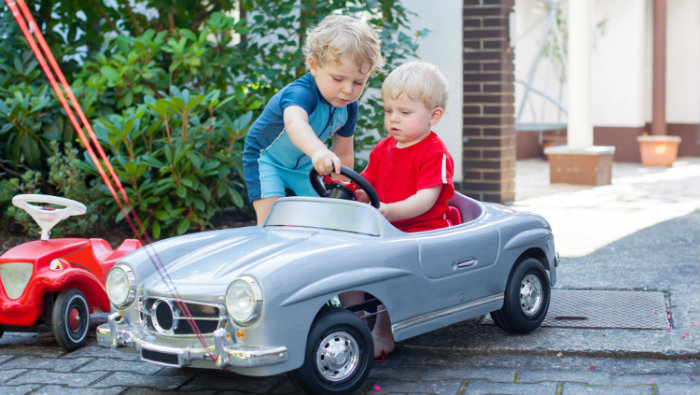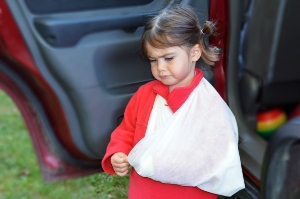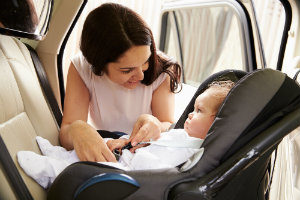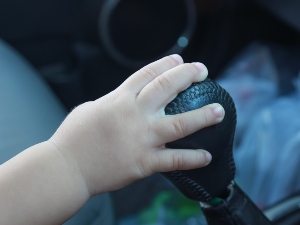Keeping Children Safe In and Around Cars

Motor vehicle crashes are a leading cause of death for children. In 2021, 711 child passengers ages 12 and younger were killed in motor vehicle crashes in the United States, and in 2020 more than 63,000 were injured. Ensuring children are properly buckled can make a lifesaving difference. Here are some safety tips for keeping children safe around cars. (Source: CDC)
When it comes to children and motor vehicles, injuries happen in so many ways. For instance:
- Children can get run over in accidental back over and front over accidents where a driver fails to notice a child and runs over him or her.
- Child passenger safety equipment may not be used or may be used or installed incorrectly.
- Air bags can deploy incorrectly.
- Trunks make children curious and are a good place to hide.
- With their smaller, less developed bodies, children are more at risk for injuries in a car accident than adults.
 Most Common Child Injuries in Car Accidents
Most Common Child Injuries in Car Accidents
- Brain and/or head injuries. This can range from minor lacerations to concussions and skull fractures.
- Spinal cord injuries
- Chest and Rib injuries. These tend to be more common in children less than a year old due to their fragile bones. A broken rib bone can easily puncture a lung or large artery.
- Limb injuries, such as forearms, shoulders and elbows.
- Chest injuries. This can cause damage to the lungs and abdomen.
Keeping Children Safe. Use Child Passenger Safety Equipment
The Centers for Disease Control and Prevention (CDC), found that restraint use typically decreases as children get older. 13% of children 8-12 years old were not buckled up as compared to 6% of children 1-3 years old. Being unrestrained in a vehicle increases the risk of being killed in a crash (36% of 8–12-year-olds killed in crashes were not buckled up).
 Making sure a child uses safety equipment and that it fits well in a car seat or booster will ensure maximum safety.
Making sure a child uses safety equipment and that it fits well in a car seat or booster will ensure maximum safety.
- Make sure your car seat and/or booster seat are based on your child’s current size and age.
- Ensure car seats are installed correctly. Read and follow the manufacturer’s instructions. Make sure you have a tight fit, no movement of more than an inch when you shake it from side to side or pull it forward.
- Do not turn the seat around too soon. Children should stay in rear facing car seats until they have reached the appropriate height and weight recommended by the manufacturer. Once reached, the car seat can be changed to be forward facing.
- Once a child outgrows the forward-facing seat, it is time to move to a booster seat.
- Use a booster seat rather than rely on an adult shoulder belt harness to keep a child safe. Children can easily slip out of these. Boosters raise a child to a height where the seat belt fits properly across the lap and chest.
- Have children ages 12 and under sit in the back seat. It is one of the safest places for children to ride when in a vehicle. Make sure that they use the seat belt properly.
- Register your car and booster seats. This will ensure you receive any notifications if the seats are subject to any safety recalls.
Prevent Back Over and Front Over Accidents
- Best practice is to look at all sides of your vehicle before getting in. This includes under it as well since a child may be playing games such as hide and seek.
- Listen as you are backing out. Turn off the radio. Power down the windows.
- Be prepared to stop quickly if you hear or feel anything.
- Never rely on backup cameras, sensors and mirrors alone. Even though newer vehicles may have technology to avoid these types of accidents, they are not foolproof.
- Teach children safety practices around vehicles and designate safe play areas. For instance, it is not safe to play near vehicles and they should hold an adult’s hand when in a parking lot. They should also keep bikes and toys out of the driveway.
A Car Does Not Have to Be Moving to Be Dangerous

Parked cars can be just as dangerous as moving vehicles.
- Car windows, which typically have safety features to prevent accidents, can cause serious injury when they close on a child’s neck, arm or other limb
- Kids playing in the car have been known to release the safety brake. This can put the car in motion rolling down the driveway into the street.
- Kids can get trapped in the trunk.
Designate safe places to play and teach children safety practices and guidelines.
Information for You
HOW CAN WE HELP YOU?
Do You Need Legal Assistance?
Contact the capable counsel you need now. One of our experienced staff will speak with you personally and provide you with a free, no-obligation case evaluation.
START YOUR FREE CASE EVALUATION TODAY
JUST WANT TO STAY UP-TO-DATE?
SIGN UP FOR OUR EMAIL NEWSLETTER
If you would like to receive news and blog updates on a regular basis, sign up to receive our email newsletter. Your email address will only be used to send you our newsletter and respond to inquiries.
SIGN UP FOR NEWSLETTER
Past results afford no guarantee of future results and each case is different and is judged on its own merits. The choice of a lawyer is an important decision and should not be based solely upon advertisements.
Editor’s Note: This post was originally published July 19, 2019. It was reviewed on October 3, 2023 and updated for content and accuracy.
Related

 Most Common Child Injuries in Car Accidents
Most Common Child Injuries in Car Accidents Making sure a child uses safety equipment and that it fits well in a car seat or booster will ensure maximum safety.
Making sure a child uses safety equipment and that it fits well in a car seat or booster will ensure maximum safety.